You may not have set foot in the lush Southeast Asian rainforests, but their existence affects your life. Home to an extraordinary tapestry of life, the biodiversity in Southeast Asia is a cornerstone of the planet’s health. But as these critical habitats face escalating threats, wildlife conservation in Southeast Asia has become a global imperative. Through conservation, we strive to uphold the ecological harmony that nurtures rare species and safeguards our collective future.
Key Takeaways
- Understanding the unique biodiversity in Southeast Asia and its global importance.
- Recognizing the critical challenges faced by wildlife protection in Southeast Asia.
- Identifying the leading goals and strategies of wildlife conservation efforts in the region.
- Realizing the profound impact that Southeast Asian rainforests have on the planet’s ecological health.
- Empowering global citizens to contribute to preserving Southeast Asia’s environmental treasures.
The Plight of Southeast Asia’s Biodiversity
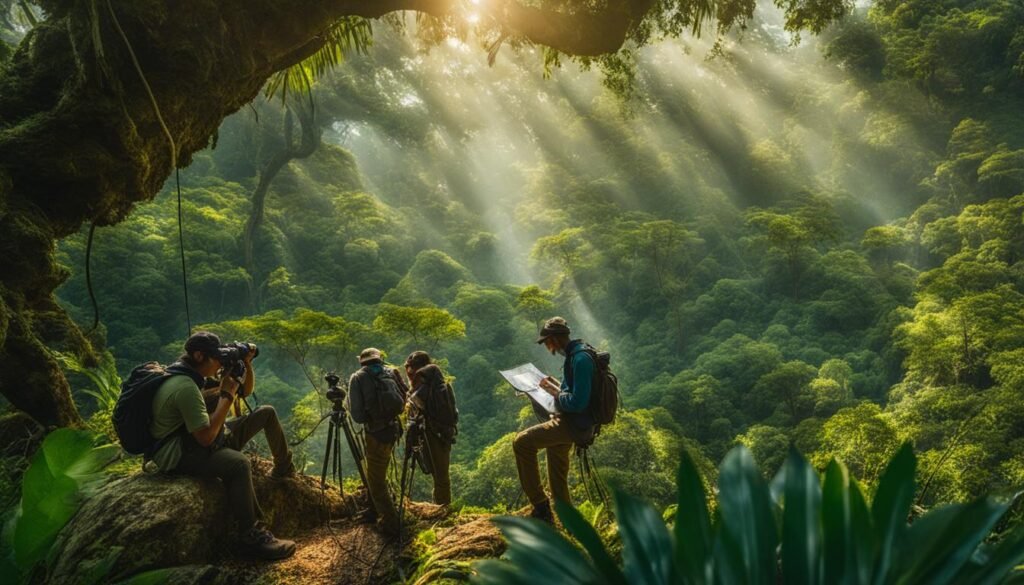
The lush rainforests, expansive coral reefs, and dense mangrove forests represent the tropical biodiversity that positions Southeast Asia as a biodiversity hotspot. However, this cornucopia of life is in grave hazard, with many ecosystems facing the brink of collapse. Environmental stewardship has never been more critical, as the rich tapestry of life unique to this region is unraveled by deforestation impacts in Southeast Asia and broad environmental changes.
The Unique Ecosystems Under Threat
Rainforests, coral reefs, and mangroves are among the most complex and productive ecosystems in the world. These habitats are teeming with endemic species of Southeast Asia, many of which can be found nowhere else on Earth. Yet, the proliferation of unsustainable agricultural practices, compounded by the effects of climate change, is resulting in irrevocable damage to these environmental treasures and thereby, diminishing global biodiversity.
Key Endangered Species in Southeast Asia
Several species unique to the region face an existential threat. They suffer from a spectrum of pressures like habitat destruction and illegal poaching which are eradicating their populations. Central among them is the Asian elephant, a majestic creature and a symbol of cultural heritage. Despite its iconic status, the Asian elephant preservation efforts continue to battle against the tide of human encroachment and the wildlife trade.
- Sumatran Rhino – On the edge of extinction due to severe habitat fragmentation.
- Javan Hawk-Eagle – Endangered due to deforestation.
- Sunda Pangolin – Heavily poached for its scales and meat.
- Orangutan – Facing critical habitat loss because of palm oil plantations.
Impact of Human Activity on Wildlife
Your footprint extends beyond the city lights and into the heart of the jungle, where Human impact on Southeast Asia’s wildlife manifests in urban development, industrial expansion, and overzealous touristic activities. These ventures disrupt the primal balance and threaten the sanctity of these ecosystems.
The implications of these human activities are profound; they not only harm the individual species but disrupt the entire ecosystem, spotlighting the critical need for immediate and effective environmental stewardship.
Protecting our planet’s biodiversity isn’t just about saving individual species; it’s about maintaining the health of entire ecosystems and the services they provide to all life on Earth. – Biodiversity Expert
Table illustrating the impacts of human activities on key Southeast Asian species:
| Species | Threat | Conservation Status | Impact of Action |
|---|---|---|---|
| Asian Elephant | Habitat loss due to agriculture | Endangered | Protected areas vital for survival |
| Sumatran Tiger | Deforestation and poaching | Critically Endangered | Anti-poaching units in effect |
| Saola | Illegal hunting, habitat fragmentation | Critically Endangered | Breeding programs under consideration |
The holistic approach to environmental stewardship necessitates not just raising awareness but promoting sustainable interactions with our environment. Only through such a concerted effort can the Southeast Asia endangered fauna hope to escape the dark shadow of extinction and thrive once more within their natural domains.
Understanding the Importance of Ecological Preservation
When you hear the term ecological preservation, it may conjure images of untouched forests or protected wildlife. However, the significance of this concept extends far beyond the surface. Ecosystems around the world, specifically those in Asia, offer irreplaceable services that stabilize the global environment and serve human communities. Emphasizing the critical role of these ecosystems, we can appreciate the multifaceted benefits they provide, from mitigating climate change to offering natural defenses against natural disasters.
In the bustling life of cities, it’s easy to overlook the silent guardians that rough the winds of climate change and shield us from its effects. Within the heart of nature reserves in Southeast Asia, lie not only an array of enchanting wildlife but also climatic stabilizers that regulate local and global weather patterns. The preservation of these natural sanctuaries is not a mere act of charity; it’s an essential investment in our planet’s future—and in our own.
The connection between habitat conservation in Asia and the wellbeing of human populations is evident through the ecosystem services that thrive in a balanced environment. Intact forests act as carbon sinks, absorbing greenhouse gases and providing us with the very air we breathe. Wetlands and mangroves along coastlines prevent flooding and reduce the devastating impact of storms.

Stewardship of the earth is not just about being ‘green’; it’s a necessity for our survival and wellbeing. The choices we make today in terms of ecological preservation will define the legacy we leave for future generations.
But perhaps even more intriguing is the untapped wealth of resources that pristine ecosystems offer. The dense jungles and verdant landscapes are living pharmacies, with countless plant species holding the secret to modern medicines. Similarly, the varied ecosystems found within Asia’s nature reserves are treasure troves of genetic diversity—keys to the resilience of both natural and agricultural systems in the face of a rapidly changing climate.
Benefits of Ecological Preservation:
- **Climate Regulation**: Forests and oceans play a vital role in controlling the temperature of the Earth.
- **Biodiversity**: A multitude of species, including many that remain undiscovered, rely on untouched habitats to survive and evolve.
- **Flood Mitigation**: Wetlands and coastal ecosystems act as natural barriers to flooding, protecting inland human communities.
- **Medicines**: Many modern drugs are derived from compounds found in plants and animals native to protected areas.
- **Cultural Value**: Sacred and cultural sites within nature reserves add to the rich tapestry of human history and identity.
If the intrinsic value of the Earth’s splendor isn’t persuasive enough, these practical benefits underscore the urgent need for robust ecological preservation measures. Such is the interconnectedness of life that disrepair of the natural world invariably brings detriment to human civilization. The protection of nature reserves in Southeast Asia is particularly crucial, as they are home to some of the most diverse life forms on the planet, supporting intricate ecosystems and local populations dependent on their continued existence.
In safeguarding these habitats for our progeny, we also secure the untold potential that each species and ecosystem holds. It is a humbling realization that humanity’s future is inextricably linked to the conservation of the wild – sustaining the delicate balance of life that has enabled our own species to flourish.
Conservation Efforts by Wildlife Organizations
In the effort to counteract the decline of wildlife populations and habitats, numerous wildlife conservation organizations are actively implementing conservation efforts across Southeast Asia. These organizations engage in a spectrum of activities, from grassroots campaigns to large-scale wildlife rehabilitation in Asia. While each organization has its unique approach, the shared goal is the restoration and preservation of the region’s rich and diverse natural ecosystems.
One notable success story involves the conservation of the critically endangered Sumatran tiger, which has seen a steady increase in numbers due to the collaboration between international NGOs and local conservation groups. This triumph serves as a beacon of hope for other species threatened by the rapid environmental changes in the region.
Together, we can turn the tide for endangered species if we support the committed work of these conservation heroes on the ground. Their efforts offer a lifeline to the wildlife in Asia facing the threats of the modern world.
Moreover, wildlife rehabilitation in Asia plays a pivotal role in the resurgence of species that have been rescued from poaching or habitat loss. Rehabilitation centers work tirelessly to heal, nurture, and reintroduce these animals back into the wild, offering them a second chance at life amidst their natural surroundings. The table below exemplifies some of the successful rehabilitation programs:
| Species | Conservation Organization | Rehabilitation Success | Location |
|---|---|---|---|
| Bornean Orangutan | Borneo Orangutan Survival Foundation | Successful release of rehabilitated orangutans into protected areas | Indonesia |
| Sunda Pangolin | Save Vietnam’s Wildlife | Rescue, rehabilitation, and release of trafficked pangolins | Vietnam |
| Indochinese Tiger | Wildlife Conservation Society (WCS) | Recovery programs leading to population stabilization | Thailand |
| Asian Elephant | Elephant Conservation Center | Healthcare and rehabilitation for elephants, including a successful breeding program | Laos |
The collaborative efforts between international and local entities, such as the partnership between the World Wildlife Fund (WWF) and various Asian governments, have been instrumental in not only protecting wildlife but also in enacting policies that aim to preserve critical habitats for future generations.
Engaging local communities in conservation initiatives has additionally paved the way for sustainable living practices that coexist with wildlife protection goals. These combined efforts are making significant strides in the fight to save Southeast Asia’s threatened species and the ecosystems they inhabit.

Your support for these wildlife conservation organizations and their conservation efforts is crucial. By advocating for their work and contributing to their causes, you become an essential part of a global movement towards a more balanced and biodiverse world.
Highlighting Key Initiatives for Biodiversity Protection
As you read this, strategic action plans are being deployed across Southeast Asia to combat the potential loss of biodiversity. These initiatives, focusing on endangered species conservation and the nurturing of Southeast Asian wildlife sanctuaries, seek to anchor the existence of nature’s rare gifts to our planet.
Endemic Species Conservation Strategies
Meticulously tailored measures are essential to safeguard species native to Southeast Asia. Organizations dedicated to animal rescue in Asia have established a network of sanctuaries and breeding programs pivotal to the survival and proliferation of endangered species within their native habitats.
- Southeast Asian Rhino Sanctuary Initiative: A collaborative effort to implement advanced breeding programs vital for the survival of the critically endangered Javan and Sumatran rhinos.
- Orangutan Conservation Program: Holistic care, including health assessment, rehabilitation, and reintroduction of rescued orangutans into the wild.
These targeted programs also extend beyond immediate rescue, embodying educational aspects to ensure community involvement and lasting change. By supporting local and global conservation efforts, you play a direct role in the conservation symphony that orchestrates the dance of life deep within these rainforests.
Habitat Restoration and Wildlife Corridors
Habitat restoration initiatives are a linchpin in the strategy to fortify the existence of Southeast Asia’s biodiversity. By re-establishing native flora, rehabilitating degraded landscapes, and fostering the rainforest ecosystem protection, these restorative efforts replenish the natural territories that apex species require for survival.
Equally imperative is the establishment of wildlife corridors in Asia. These seamlessly integrated pathways are lifesavers for species navigating the gauntlet of human-altered landscapes. Corridors enable the essential movement of wildlife, securing not only their migratory patterns but the pivotal genetic exchange necessary for species resilience and diversification in the wild.
| Conservation Project | Habitat Region | Key Species Benefited | Objective |
|---|---|---|---|
| Harapan Rainforest Initiative | Sumatran Rainforest | Sumatran Tiger, Sumatran Orangutan | Restoration of degraded forest land and formation of contiguous wildlife habitats. |
| Mekong Wildlife Corridors | Mekong River Basin | Asian Elephant, Indochinese Tiger | Connecting fragmented habitats to allow safe migration and genetic exchange. |
Highlighted below are case studies depicting the empowering transformations observed in regions where active habitat restoration and the creation of strategic wildlife corridors have been implemented:
In Thailand’s Western Forest Complex, a network of wildlife corridors has significantly reduced the instances of human-elephant conflicts and bolstered elephant populations, showcasing how thoughtful conservation planning benefits both wildlife and local communities.
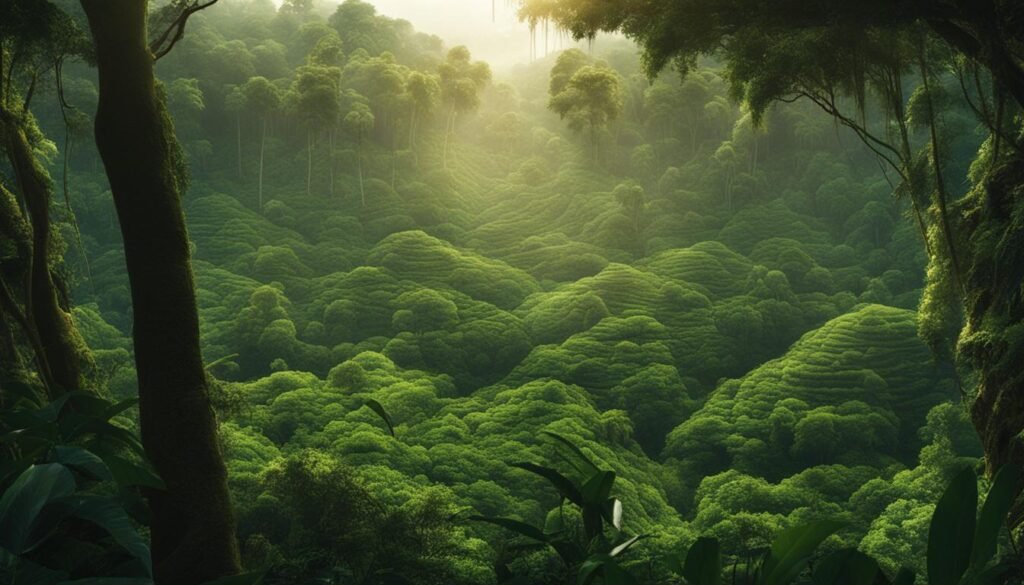
Recognition of these successes fuels the continuation of such monumental efforts. Your awareness and advocacy champion the notion that every restored habitat and constructed corridor touches countless lives—from the fluttering wings of a pollinating butterfly to the thundering stride of the Asian elephant.
In conclusion, through the combined strength of sanctuaries, conservation strategies, and eco-conscious infrastructure, there is hope. Hope that sparks with every humid whisper of the rainforest, with every echo along these vital corridors, that someday soon, the endangered symphony of Southeast Asia will resound, not with notes of plight, but with the crescendo of resurgence.
Combating Illegal Wildlife Trade in Asia
The shadowy arena of the illegal wildlife trade in Asia is a multi-billion dollar industry that thrives on the exploitation of the region’s rich biodiversity. Despite ongoing legislative efforts and the establishment of international agreements designed to protect wildlife, poachers and traffickers continue to decimate Asia’s unique species for commercial gain. Your understanding and support in poaching prevention in Asia are critical to curbing this illicit trade and safeguarding the continent’s natural heritage.
Integral to the fight against the wildlife black market are stringent legislative actions and intense enforcement measures. Countries across Asia have revised their laws, imposed heftier penalties, and enhanced surveillance to deter offenders. These robust enforcement efforts are supported by intergovernmental agencies like CITES and numerous non-profit organizations striving to end the illegal capture and sale of these voiceless victims.
Real change is achieved not only by laws and penalties but also through heightened public awareness and participation in conservation efforts. Every individual has a role to play in eradicating wildlife crimes that threaten our natural world.
Public awareness campaigns are fundamental in combating this crisis. By informing communities about the severe consequences of wildlife trafficking, we empower individuals to take a stand against it. Additionally, undercover investigations by dedicated activists and organizations into trafficking networks have brought to light the harsh realities of this trade and have paved the way for successful interventions.
In the realm of marine conservation in Southeast Asia, significant strides have been made, particularly in protecting endangered coral reefs and the myriad species they support. These delicate marine environments are nurseries for our oceans, and their preservation is essential for maintaining the rich tapestry of marine life, as well as the livelihoods of local communities that hinge on sustainable fisheries and tourism.
| Region | Laws and Regulations | Impact on Wildlife Trade |
|---|---|---|
| Indonesia | Strict penalties on the trade of protected species | Decrease in illegal trade of orangutans, birds, and reptiles |
| Philippines | Wildlife Resources Conservation and Protection Act | Reinforced coral reef protection and anti-poaching of marine life |
| Thailand | Wild Animal Reservation and Protection Act | Enhanced regulation of wildlife markets and crackdown on illegal traders |
Moreover, the collaboration between governments, conservationists, and marine biologists has led to the creation of marine sanctuaries where fishing and other extractive activities are prohibited. These sanctuaries serve as safe havens, ensuring the survival and proliferation of threatened marine species and contributing to the resilience of reef ecosystems.
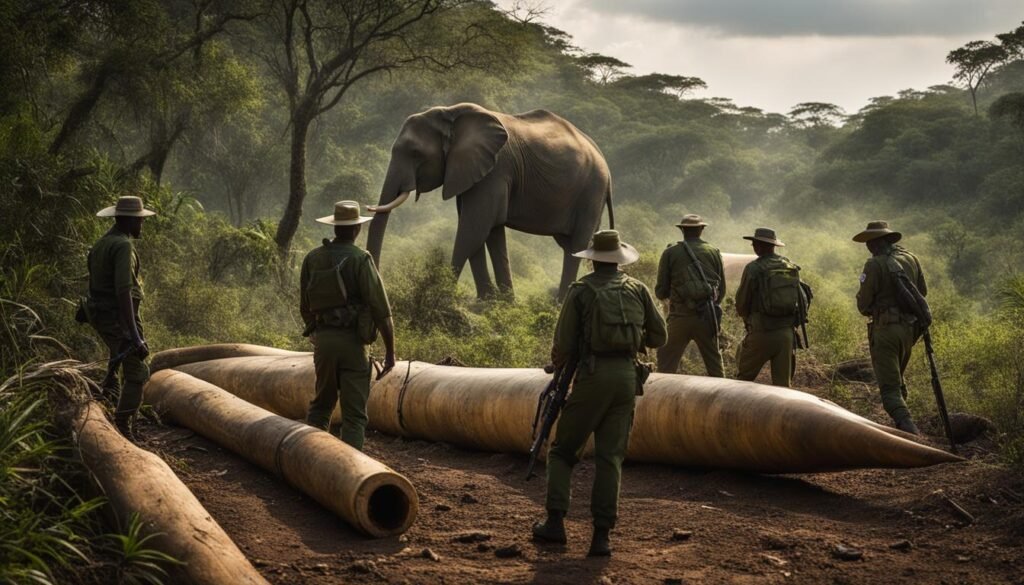
As a global citizen concerned about the health of our planet, your voice can amplify the call for more efficient wildlife protection measures. By supporting organizations that combat the illegal wildlife trade in Asia, choosing sustainable seafood options, and advocating for conservation, you contribute to the pressure required to enforce anti-trafficking laws and encourage government accountability.
With committed action from both local and international communities, it is possible to stem the tide of illegal trade and illuminate a path towards a future where Asia’s natural wonders can flourish, free from the bondage of human exploitation.
Community Engagement in Environmental Stewardship
At the heart of conservation lies a simple truth: local communities are the custodians of their environments. In Asia, a region graced with spectacular natural resources and biodiversity, community-based conservation has taken root, bridging traditional wisdom with modern conservation practices. Such indigenous knowledge and land stewardship are key in the fight to preserve the Earth’s vital resources.
True environmental stewardship is a collaborative effort, necessitating the hands and hearts of those who reside closest to these natural wonders. Through their active participation in conservation projects and wildlife education in Asia, these communities not only shield endangered ecosystems but forge a sustainable future alongside the diverse wildlife that shares their home.
The harmony between human activity and the natural world is best orchestrated by the very people whose lives are most intertwined with the land they inhabit.
Leveraging the wealth of indigenous knowledge, community members become powerful allies in conservation. Their insight into sustainable practices and resource management can often surpass conventional methods, making their involvement a cornerstone of successful environmental protection strategies. The following table showcases the benefits of integrating community efforts with broader conservation initiatives:
| Community Contribution | Environmental Benefit | Impact on Conservation |
|---|---|---|
| Traditional Ecological Knowledge | Sustainable resource usage | Enhanced ecosystem health and resilience |
| Participation in Biodiversity Surveys | Accurate species inventory | Targeted conservation actions |
| Educational Programs and Workshops | Increased public awareness | Widespread support for conservation measures |
| Eco-friendly Livelihoods | Reduced environmental impact from economic activities | Long-term habitat preservation |
Wildlife education in Asia particularly benefits from the participation of local residents. By educating youth and adults alike about the value of their natural heritage, communities can invoke a collective responsibility for protecting their environment. Such educational initiatives empower individuals to act, transforming them into advocates for the wildlife they coexist with.
- Interactive wildlife workshops promote species-specific conservation tactics.
- School curriculums incorporating local biodiversity ignite early interest in conservation careers.
- Community-led eco-tours disseminate knowledge while fostering a sustainable economy.
In essence, when you empower a community with the skills and knowledge needed for environmental stewardship, you ignite a ripple effect of conservation success that spans generations. This is particularly evident in Community-based conservation in Asia, where a blend of respect for nature and ancestral wisdom is guiding the path to sustainable living.
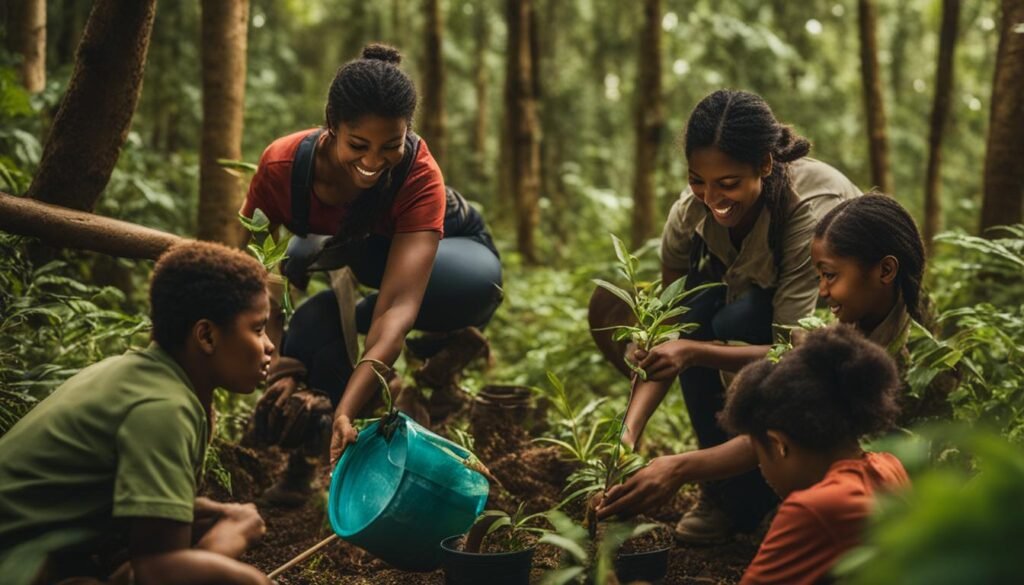
Imagine a future where every community acts as a guardian of the natural world. A world where environmental stewardship is not an abstract concept but a tangible, daily practice. Through community contribution to conservation, this vision is steadily becoming a reality in Asia and beyond. Your recognition and support for these community initiatives can help sustain this invaluable momentum toward a more balanced planet.
The Role of Sustainable Development in Conservation
As you explore the myriad of ways to protect our planet’s delicate ecosystems, sustainable development stands out as one of the most effective tools for conservation. This approach encompasses a blend of strategies that account for ecological, social, and economic health. Specifically, in the tourism industry, which is prolific in Southeast Asia, sustainable practices have become pivotal in conserving natural resources while benefiting local communities.
Incorporating Ecotourism and Sustainable Tourism
The principles of ecotourism in Southeast Asia are designed to leave a light footprint on nature. Aligning with sustainable tourism, the core of ecotourism is to provide an immersive experience for visitors while conserving the environment and uplifting local economies. This can take many forms, from guided wildlife tours by local experts to eco-friendly accommodations that reduce energy and resource consumption.
Central to the ethos of sustainable tourism is the aim to create a symbiotic relationship between the traveler and the destination. Let’s delve into how sustainable tourism in Southeast Asia is not just a feel-good phrase, but a concrete strategy for conservation.
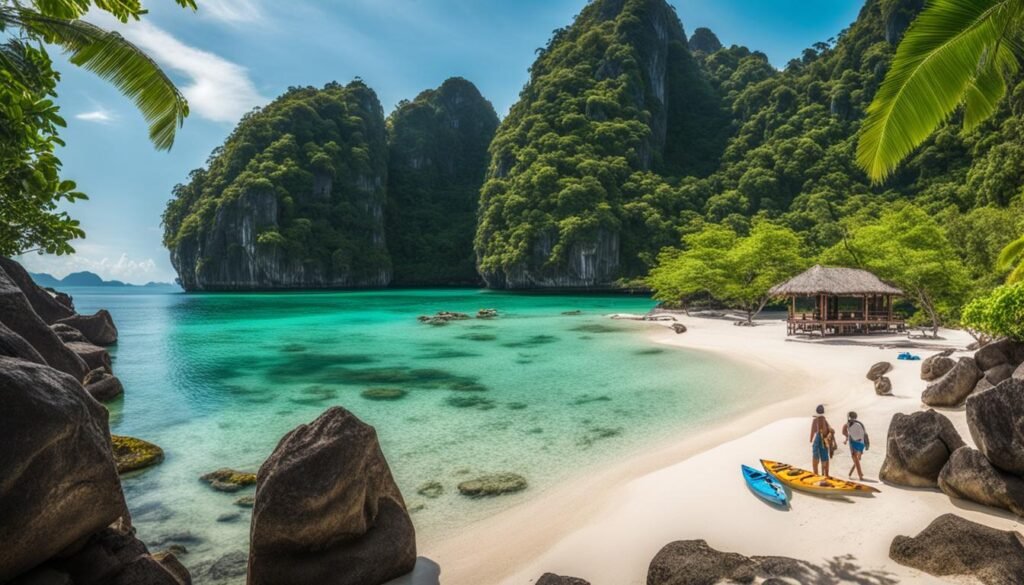
Embracing sustainable tourism isn’t a fleeting trend—it’s the cornerstone of a future where travel and nature exist in harmony.
Responsible travel initiatives thrive across Southeast Asia, offering a pragmatic blueprint for other regions to emulate. Here are a few key components:
- Local empowerment: Tourism revenues are invested back into the community to foster economic development.
- Environmental education: Travelers gain insight into local conservation efforts, fostering global eco-awareness.
- Wildlife protection: Tourist activities are designed to support, not exploit, native flora and fauna.
Consider the case of ecotourism initiatives in Thailand and Indonesia, where sustainable practices are woven through the very fabric of touristic experiences. In these countries, ecotourism ventures not only safeguard delicate ecosystems but also reshape the way visitors interact with nature.
| Country | Sustainable Tourism Practice | Conservation Impact | Community Benefit |
|---|---|---|---|
| Thailand | Eco-lodges run by locals | Reduced environmental disturbance | Increased local employment and revenue |
| Indonesia | Coral reef restoration programs | Revival of marine biodiversity | Boost to fishery and snorkeling services |
What truly sets sustainable tourism apart is its capacity to convert visitors into dedicated stewards of the environment. Through your engagement with sustainable travel choices in Southeast Asia, you are not merely a tourist; you become an active participant in a global movement championing ecological survival and cultural integrity.
Ultimately, the success of sustainable development in conservation is intertwined with our collective choices and actions. Support for sustainable development fortifies the link between the health of ecosystems and the prosperity of communities, ensuring Southeast Asia’s natural beauty endures for generations to come.
Legislation and Wildlife Conservation Laws in Asia
The intricate ecosystem of Southeast Asia, with its mesmerizing diversity of flora and fauna, is safeguarded by a complex framework of wildlife conservation laws. These statutes are paramount in preserving the richness of biodiversity and maintaining ecological balance. As stewards of the environment, it is imperative for us to understand the legislative undertakings pivotal in protecting the natural heritage of this region.
Preservation of wildlife and their habitats is not a luxury but a necessity. It is a commitment enshrined in law to secure the ecological treasures of Asia for future generations.
In the realm of international treaties, Southeast Asian countries are signatories to the Convention on International Trade in Endangered Species of Wild Fauna and Flora (CITES), which plays a crucial role in curbing the cross-border wildlife trade. Additionally, the Association of Southeast Asian Nations (ASEAN) Centre for Biodiversity is a testament to the collaborative efforts aimed at biodiversity protection.
Despite these strides, enforcement challenges persist, often exacerbated by the lack of resources and the need for more stringent implementation. Potential solutions hinge on the synergistic relationship between legislations, relentless enforcement actions, and the unwavering vigilance of communities that cherish the natural beauty surrounding them.
**Key Wildlife Conservation Laws in Asia**:
- Indonesia: Law of the Republic of Indonesia Number 5 Year 1990 concerning Conservation of Biological Natural Resources and Ecosystems.
- Philippines: Republic Act No. 9147, known as the Wildlife Resources Conservation and Protection Act.
- Thailand: Wild Animal Reservation and Protection Act B.E. 2535 (1992).
- Malaysia: Wildlife Conservation Act 2010 (Act 716).
To illustrate the key elements of these laws, let’s delve into the specifics:
| Country | Legislation | Key Provisions | Enforcement Challenges |
|---|---|---|---|
| Indonesia | Law No. 5/1990 | Prohibition of trade in endangered species, habitat conservation | Resource limitations, illegal poaching |
| Philippines | Republic Act No. 9147 | Conservation and protection of wildlife resources, licensing and regulation of wildlife utilization | Enforcement in remote areas, limited conservation funding |
| Thailand | Wild Animal Reservation and Protection Act | Protection of wild animals from poaching, control of possession and breeding | Cross-border trafficking, lack of public awareness |
| Malaysia | Wildlife Conservation Act 2010 | Conservation of wildlife through species and habitat protection | Inadequate monitoring of vast rainforest areas |
While deploying wildlife conservation laws in Asia, the unique challenges of each nation must be considered. Endemic species, cultural nuances, and regional geopolitics all influence the efficacy of these laws. Furthermore, the local populace plays a critical role in the active enforcement and compliance with these conservation edicts.
Rigorous environmental stewardship, strengthened by legislative action, remains our best chance at preserving the flora and fauna of Southeast Asia. To witness the biodiversity protection efforts succeed, it calls for a collective resolve from lawmakers, environmental custodians, and each one of us.

Global Partnership and Funding for Conservation Efforts
The burgeoning threats posed by climate change on Asian wildlife and their habitats underscore the pressing need for an increase in conservation funding in Southeast Asia. It is through global alliances and the concerted efforts of environmental NGOs in Asia that conservation funding is sourced and efficiently allocated, laying the groundwork for tangible change to take hold.
Conservation projects are often complex and multi-faceted, necessitating significant financial resources tailored to address specific objectives. Global partnerships have emerged as pivotal players, harnessing international resources and expertise to augment local conservation strategies. By pooling resources, knowledge, and influence, global and local entities are catalyzing efforts to conserve Southeast Asia’s rich biodiversity.
Uniting efforts across borders can amplify conservation impact, reinforcing the foundations for sustainable biodiversity protection.
In your role as a supporter of environmental initiatives, understanding the nuances of funding channels and mechanisms acts as a compass guiding your contributions effectively. Funding often filters through a variety of pathways, including direct NGO operations, community-based projects, and governmental or intergovernmental collaborative programs.
Here’s a glimpse into the diversity of funding sources propelling conservation action across Southeast Asia:
- International grants offered by governments and intergovernmental agencies
- Philanthropic endeavors by corporations and private foundations
- Community funding initiatives and local crowdfunding platforms
- Revenue from sustainable ecotourism ventures
- Financial aid allocated through conservation trust funds
Now, take a closer look at the comparative strengths of environmental NGOs versus international aid in the context of conservation funding:
| Source of Funding | Advantages | Primary Focus | Examples |
|---|---|---|---|
| Environmental NGOs | Local expertise, community engagement, specialized in biodiversity protection | Direct action projects, education campaigns, habitat restoration | World Wildlife Fund (WWF), Conservation International (CI) |
| International Aid | Larger funding pools, broad geopolitical impact, infrastructural development | Habitat protection, policy development, capacity building | Global Environment Facility (GEF), ASEAN Centre for Biodiversity (ACB) |
Environmental NGOs particularly are on the forefront, implementing boots-on-the-ground projects and mobilizing community engagement. Their intimate knowledge of regional needs, coupled with grassroots connections, makes them ideal conduits for conservation initiatives. Conversely, international aid serves as a crucial supplement, bolstering larger-scale endeavors and underpinning policy reinforcement for long-term environmental governance.
Climate change effects on Asian wildlife
can no longer be regarded as a distant forecast but as an immediate hazard that calls for urgent funding and resolute action. As habitats shrink and species face escalated threats, it becomes evident that the future of Southeast Asia’s biodiversity swings in the balance of timely and effective conservation funding.

Your support can lead to meaningful contributions that combat the dire predictions made for the region’s wildlife. By advocating for global collaborations and financial sponsorship of climate initiatives, you are a vital force in a shared vision for a sustainable future. Whether through direct funding, promotion, or participation, your involvement is essential in the collective venture to sustain the beauty and ecological integrity of Asia’s remarkable landscapes.
Conclusion
The collective journey through the pressing subject of Wildlife Conservation Southeast Asia brings us to a poignant realization of the stakes at hand. From the endangered corridors of majestic rainforests to the teeming life below the surfaces of coral reefs, Southeast Asia’s biodiversity stands as a testament to nature’s intricate masterpiece. But this biological tapestry, woven over millennia, presently confronts perilous threats that jeopardize not only regional abundance but the stability of global ecosystems.
Your role in global conservation efforts extends beyond passive concern, evolving into an active force propelling positive change. By embracing the cause for environmental stewardship, you contribute to a worldwide movement aimed at securing the ecological marvels of Southeast Asia for present and future generations. The urgency of these conservation endeavors beckons your support, whether it manifests as advocacy, informed choices, or direct involvement in community-based actions.
Thus, as the horizon of our discourse nears, let us reiterate the boundless value of Southeast Asia’s lush environments and the collective imperative to safeguard their future. It is through each informed decision and every committed step towards preservation that we can uphold this rich legacy—a duty and privilege vested in all of us. Your enduring engagement in these vital conservation measures echoes a global commitment to a thriving, biodiverse planet, where the echoes of the Asian rainforest persist as nature’s own symphony of life.
FAQ
Why is Southeast Asia considered a priority for wildlife conservation?
Southeast Asia is a priority for wildlife conservation due to its extraordinary biodiversity, including numerous endemic species, and the severe threats it faces such as deforestation, poaching, and the illegal wildlife trade. The region’s ecosystems, such as the Southeast Asian rainforests, are invaluable for global ecological balance and the preservation of biodiversity.
What are some of the key endangered species in Southeast Asia?
Key endangered species in Southeast Asia include the Asian elephant, Sumatran rhinoceros, Bornean orangutan, Sunda tigers, and various species of turtles and birds, many of which are endemic to the region and whose existence is vital to maintaining the ecological diversity of their habitats.
How are human activities impacting wildlife in Southeast Asia?
Human activities, including urban development, deforestation for agriculture, and pollution, are leading to habitat destruction and fragmentation, putting significant pressure on wildlife populations. Additionally, the rise in unsustainable tourism and illegal wildlife trade further endangers the region’s species and ecosystems.
What is ecological preservation and why is it important in Southeast Asia?
Ecological preservation involves protecting and maintaining intact ecosystems and their biodiversity, which in turn supports climate regulation, food security, and natural resources crucial for human livelihoods. In Southeast Asia, it’s imperative for the survival of unique species and the wellbeing of local communities who depend on these ecosystems for their sustenance and economy.
Can you highlight some successful conservation efforts by wildlife organizations in Southeast Asia?
Wildlife organizations have successfully implemented programs like anti-poaching patrols, breeding initiatives for endangered species, habitat restoration projects, and campaigns that bolster local and international awareness and support. These efforts have led to the partial recovery of certain species and the improvement of protected areas.
What strategies are in place for endemic species conservation?
Strategies for endemic species conservation include establishing and managing wildlife sanctuaries, implementing breeding programs to increase population numbers, conducting research for more informed conservation methods, and enforcing stricter laws to prevent poaching and habitat destruction.
How do wildlife corridors contribute to biodiversity protection?
Wildlife corridors are vital in connecting fragmented habitats, allowing for safe migration, breeding, and expansion of wildlife populations. They also facilitate genetic diversification, helping to strengthen resilience against diseases and environmental changes, and are a key element for long-term conservation success.
What are the challenges in combating illegal wildlife trade in Asia?
The challenges include inadequate enforcement of laws, corruption, lack of resources and training for conservation personnel, and high demand for illegal wildlife products. Addressing these issues requires a multifaceted approach including legislation, international cooperation, and community education and involvement.
How does community involvement enhance environmental stewardship in Southeast Asia?
Community involvement enhances environmental stewardship by leveraging indigenous knowledge and fostering a sense of ownership and responsibility towards local ecosystems. Engaging communities in conservation activities leads to more effective and sustainable management of natural resources.
What role does sustainable development play in conservation efforts?
Sustainable development plays a crucial role in conservation by integrating environmental protection with socio-economic growth. This includes practices such as ecotourism, which promotes conservation awareness, generates funding for preservation projects, and supports local economies without harming the environment.
What legislative measures support wildlife conservation in Southeast Asia?
Legislative measures include national laws and international agreements that protect endangered species, prohibit illegal trade, and govern land-use practices. However, effective wildlife conservation also requires robust enforcement, penalties for non-compliance, and public education about the importance of biodiversity protection.
How do global partnerships and funding contribute to conservation in Southeast Asia?
Global partnerships and funding provide critical resources for conservation projects that may otherwise be underfunded. International collaborations can lead to shared expertise, increased capacity for research and enforcement, and a broader audience for advocacy and education efforts imperative for the vast biodiversity in Southeast Asia.



